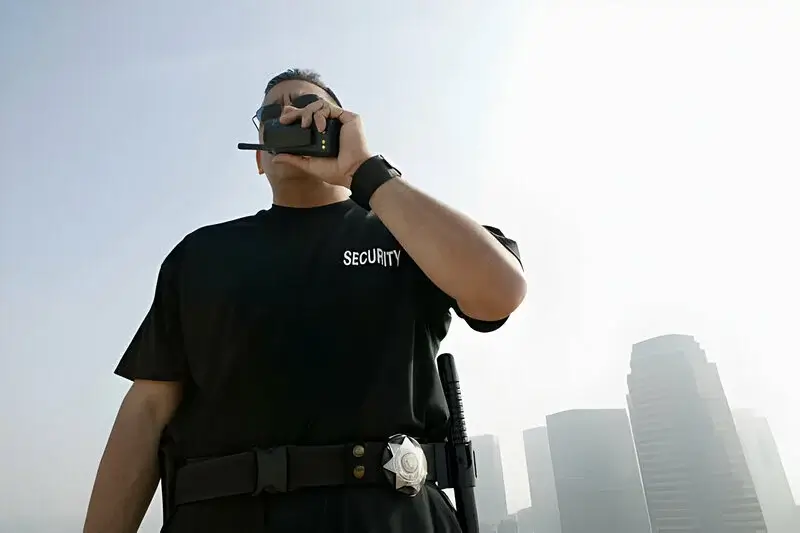10 Differences Between a Two-Way Radio and a Walkie-Talkie?

Walkie-Talkie
In the realm of communication devices, two terms often pop up: two-way radios and walkie-talkies. While they serve similar functions, there are distinct differences between the two that can affect their usage and suitability for various situations. This blog will look at the differences between these gadgets, emphasizing their unique features and applications.
Form Factor
- Two-way radios typically come in larger, bulkier designs, resembling handheld transceivers with protruding antennas. They are often used in professional settings such as construction sites, security operations, and emergency services.
- On the other hand, walkie-talkies are more compact and portable, featuring a simpler design suited for recreational activities like camping, hiking, or communication between family members in crowded places like theme parks.
Range:
- Two-way radios generally have a longer range compared to walkie-talkies, thanks to their more robust transmitters and antennas. This makes them ideal for communication over longer distances, especially in areas with obstacles or rough terrain.
- Walkie-talkies offer shorter ranges, typically suitable for shorter-distance communication within a localized area. While they may not have the same reach as two-way radios, they are sufficient for most recreational or small-scale applications.
Power Output:
- Two-way radios are equipped with higher power output capabilities, allowing them to transmit signals over greater distances and penetrate obstacles more effectively. This feature is essential in scenarios where reliable communication is critical, such as search and rescue operations or large-scale events.
- Walkie-talkies have lower power output, which limits their range and effectiveness in environments with significant interference or obstructions. However, their power output is usually adequate for everyday use in close proximity.
Battery Life:
- Due to their larger size and power requirements, two-way radios typically have longer battery life compared to walkie-talkies. This is advantageous in situations where users need extended communication without frequent recharging or battery replacements.
- Walkie-talkies have more compact batteries, resulting in shorter battery life. While this may be sufficient for occasional use, users may need to carry spare batteries or recharge more frequently, especially during prolonged outings.
Frequency Bands:
- Two-way radios often operate on a wider range of frequency bands, including licensed frequencies allocated for specific professional or governmental use. This allows for more secure and interference-free communication in regulated environments.
- Walkie-talkies commonly operate on license-free bands, such as the Family Radio Service (FRS) or General Mobile Radio Service (GMRS) bands. While these frequencies are open to the public, they may experience more congestion and interference, particularly in densely populated areas.
Channels and Privacy Codes:
- Two-way radios typically offer a greater number of channels and privacy codes, providing users with more options for communication and reducing the likelihood of interference from other users.
- Walkie-talkies often have fewer channels and privacy codes, which can result in more frequent interruptions from nearby users operating on the same frequency. This limitation may not be a significant issue in casual or recreational settings but could pose challenges in crowded areas.
Durability:
- Two-way radios are designed to withstand harsh conditions and rugged environments, featuring robust construction and weatherproofing to ensure reliability in demanding situations. They are commonly used in industries such as construction, manufacturing, and public safety.
- Walkie-talkies are generally less rugged than two-way radios, as they are primarily intended for recreational use. While they may offer some level of water resistance or shockproofing, they may not be suitable for heavy-duty applications or prolonged exposure to extreme conditions.
Accessories and Features:
- Two-way radios often come with a variety of accessories and features tailored to specific professional needs, such as hands-free operation, external microphones, and compatibility with headsets or earpieces. These accessories enhance usability and versatility in diverse environments.
- Walkie-talkies may offer fewer accessories and features, focusing more on simplicity and portability. However, they may still include basic functionalities like built-in flashlights, VOX (Voice-Activated Transmit) capabilities, or belt clips for convenient carrying.
Cost:
- Two-way radios tend to be more expensive than walkie-talkies, reflecting their higher performance capabilities and specialized features. The cost may vary depending on factors such as brand, model, and additional accessories included.
- Walkie-talkies are generally more affordable, making them accessible to a broader range of users for recreational purposes or casual communication needs. While they may lack some of the advanced features found in two-way radios, they offer a cost-effective solution for short-range communication.
Intended Use:
- Two-way radios are typically employed in professional settings where reliable, long-range communication is essential for coordination, safety, and operational efficiency. They are commonly used by emergency responders, security personnel, construction crews, and event organizers.
- Walkie-talkies are geared towards recreational activities and everyday communication needs, providing a convenient way for individuals or groups to stay connected during outdoor adventures, family outings, or casual gatherings.
Conclusion
In conclusion, while two-way radios and walkie-talkies share similarities in their basic function of facilitating wireless communication, they cater to different needs and environments due to variations in range, power, durability, features, and intended usage.
Whether you’re navigating the rugged terrain of a construction site or enjoying a leisurely hike in the wilderness, understanding the differences between these devices can help you choose the right tool for the job.
So, whether you’re a professional seeking reliable communication on the job or an outdoor enthusiast looking to stay connected on your adventures, there’s a walkie-talkie or two-way radio suited to your needs.
Read Also
How to get the edge on fellow Australian athletes with the best pre-workout supplements
How to Choose the Right Swim Training Gear for Your Goals
For More exciting news, visit: TimesInform










